What’s a “Boatel?” Well, one can spend the night aboard an original 1931 railcar ferry, The S.S. City of Milwaukee. A “Boatel” is a living history hotel with water underneath! I had no idea that Manistee, Michigan housed an original 1931 Grand Trunk Railroad ferry steamship. Join my husband, Chuck, and I as we tour the ship and spend the night aboard the railroad company’s vessel.
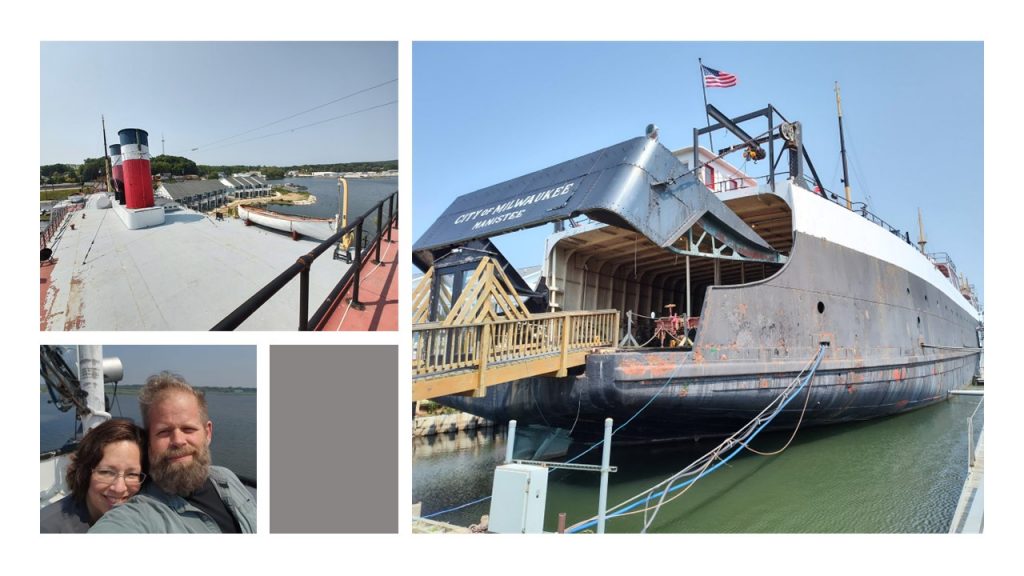
S.S. City of Milwaukee
This ship had been built in 1930 to replace the S.S. Milwaukee, which had sadly sank on October 22, 1929. For decades The S.S. City of Milwaukee had been part of the Grand Trunk Railroad fleet of railcar ferries. Later from 1978-1982 the S.S. City of Milwaukee had worked with the Ann Arbor Railroad until she retired. The steamship was moved to Manistee in 2000. After restoration, she opened for tours and overnight stays in 2004.
Steamship History
From 1892-1982, up to 32 railcars could be transported per trip across Lake Michigan by one of fourteen steamships. This clever method saved time and money by avoiding Chicago’s congested rail lines.
The S.S. City of Milwaukee is now owned by the Society for the Preservation of the S.S. City of Milwaukee. This group continues to work hard to keep her in pristine shape.
Boarding The Ship
As Chuck and I creaked across the dock we were greeted by workers busily maintaining the steel hull of the S.S. City of Milwaukee. As we mounted the metal staircase alongside the ship, we could hear 1930’s jazz music. Checking in at the gift shop, Brandi led us up another flight to the cabins.
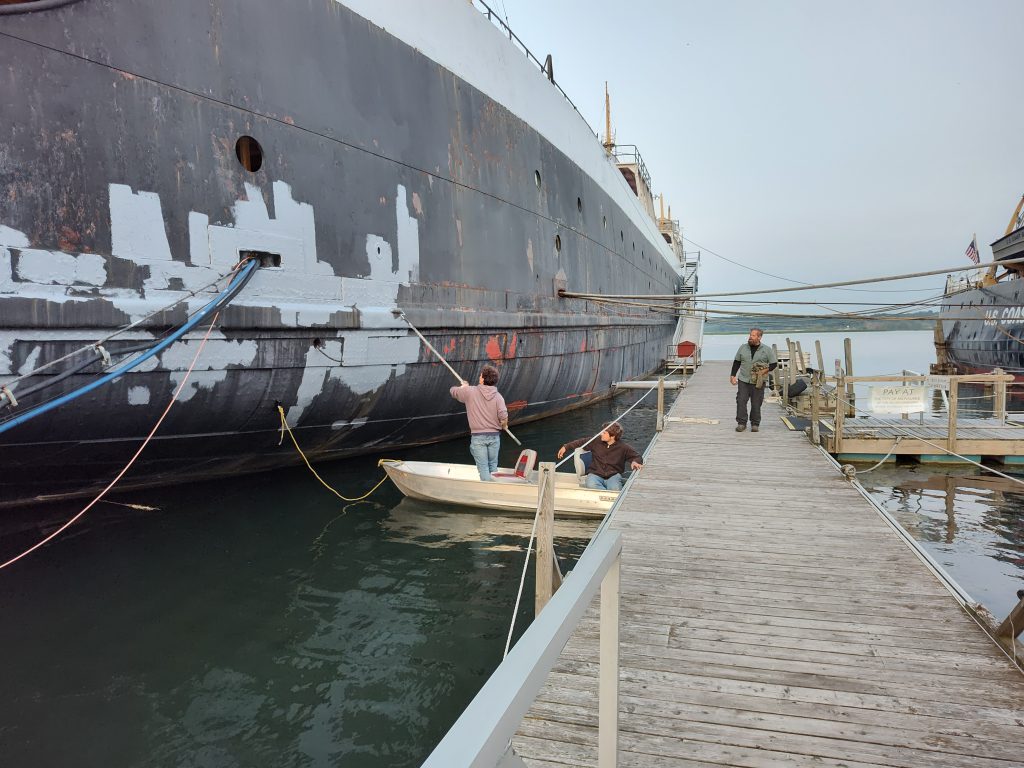
The Exquisite Interior
Music lofted from the Victrola as we entered the common area of the ship. It was as if we’d just stepped back into the 1930’s! The wooden paneled décor as well as the red tiled floor reminded me of my Grandmother’s home built in the 1920’s.
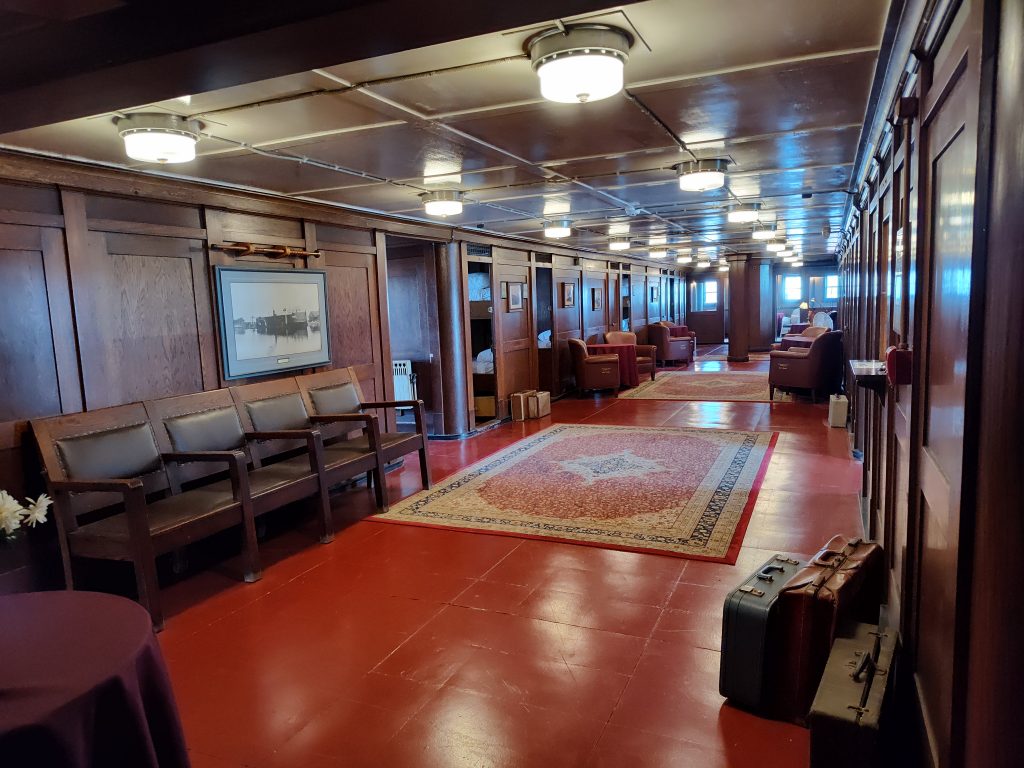
Chairs had been embroidered naming beneficiaries who had paid for restorations.
Chuck took my hand and we did a slow motion jitter bug. That’s my speed these days. With his affection I still get ‘twitter pated!’ He’s just adorable! (Don’t tell him I said so!)
Sleeping Berths
Sleeping berths surrounded the perimeter of the common area. Railroad workers would have the opportunity to relax and rest as the vessel crossed Lake Michigan.
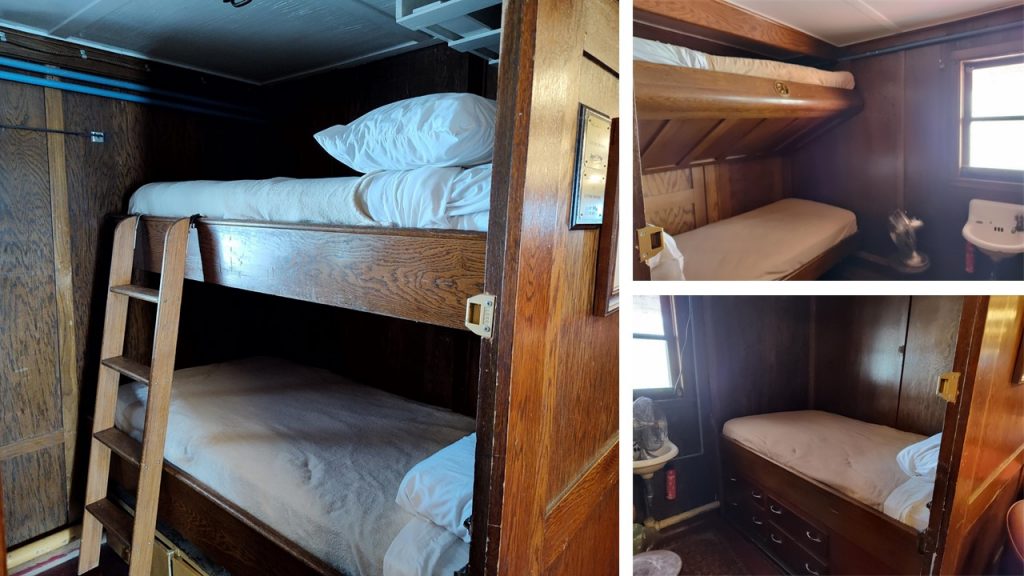
The Galley
As the journey commenced four meals had been prepared daily in the galley: breakfast, lunch, dinner and a midnight service as well.
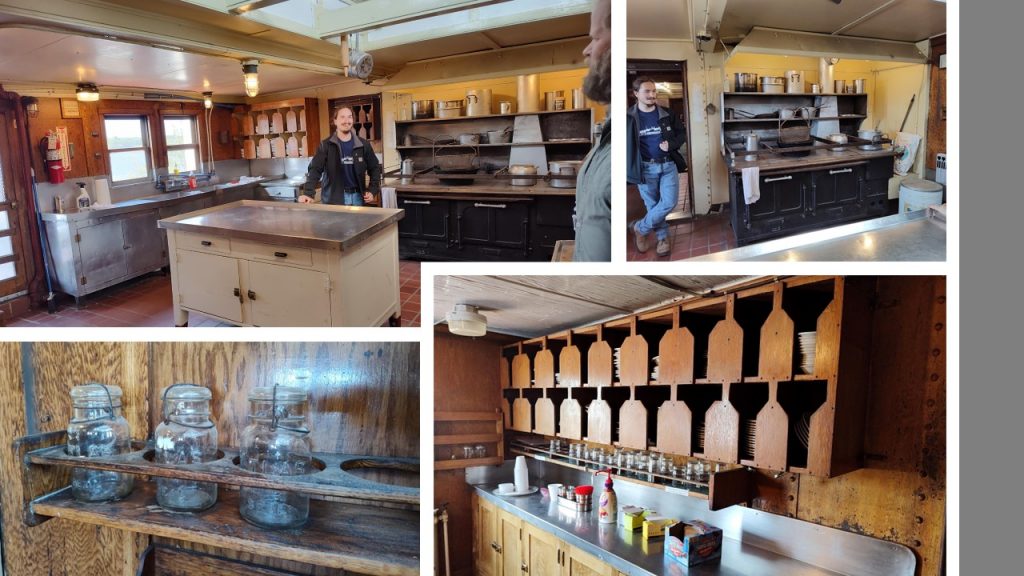
The cabinetry design held the plates steady along the ship’s walls.
The Berths For The Cooks
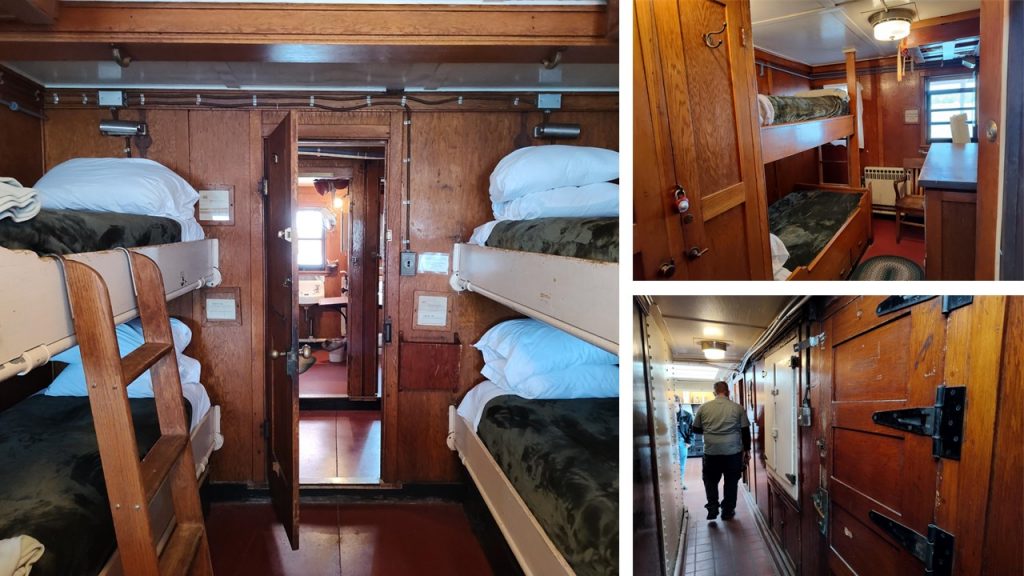
The cook and the assistant had the room shown at the top right.
(Bottom right) The narrow hallway had a refrigerator and small freezer.
Since the ship came into port frequently, supplies could be replenished regularly, so only a small refrigerator and freezer were needed.
The Captain’s Quarters
The Captain’s Quarters contained a large room with a bed on one side and an adjacent desk. A private stairway leading to the helm stood in the center of his room.
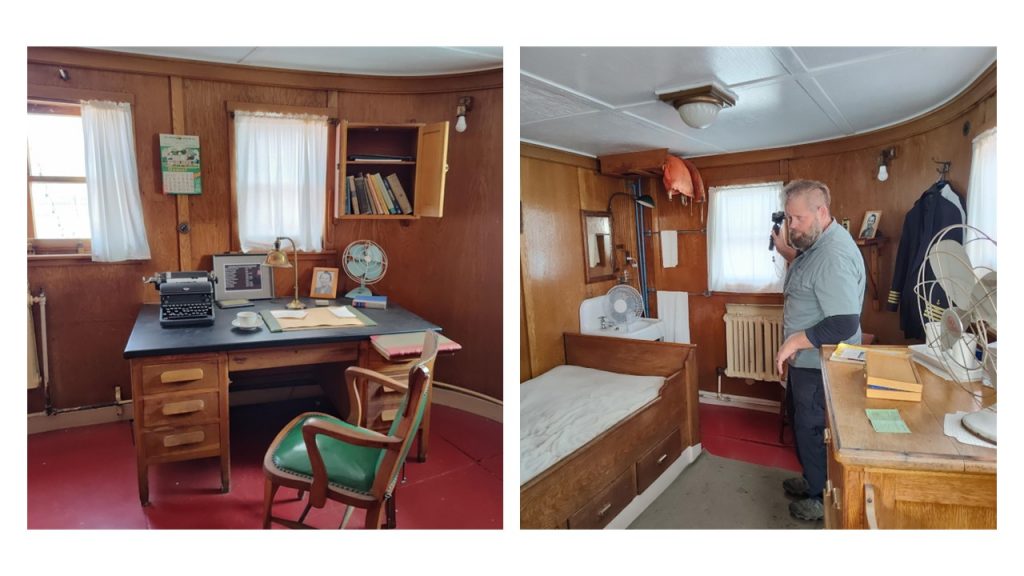
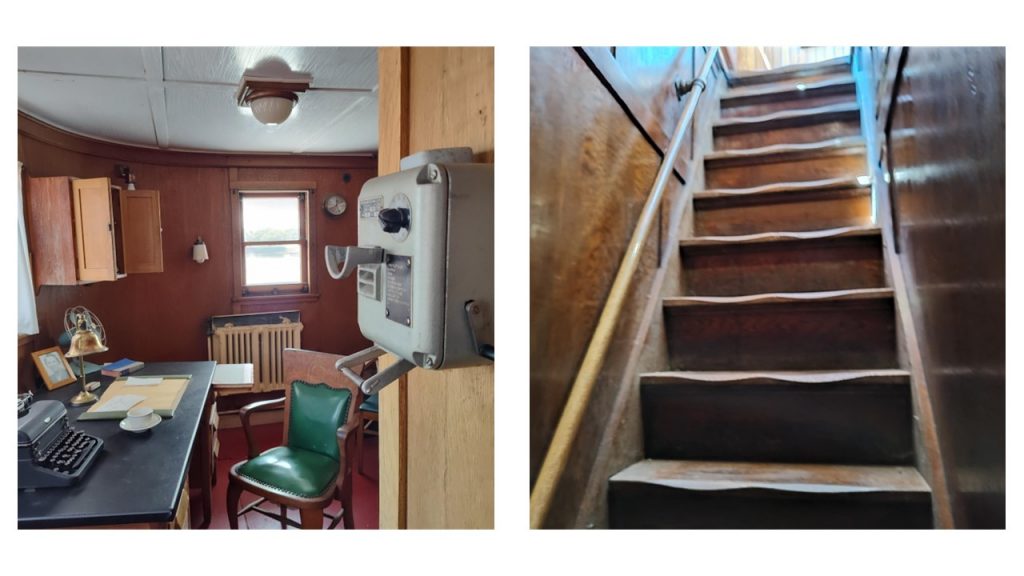
A phone device was located in the office area as well as another at the helm. A third stood ready to receive direction down below in the engine room.
The Helm
The 360 degree view from the helm was captivating! Being able to wander around the steamship was a treat. Later, we revisited this space with our tour guide and learned about the notification systems.
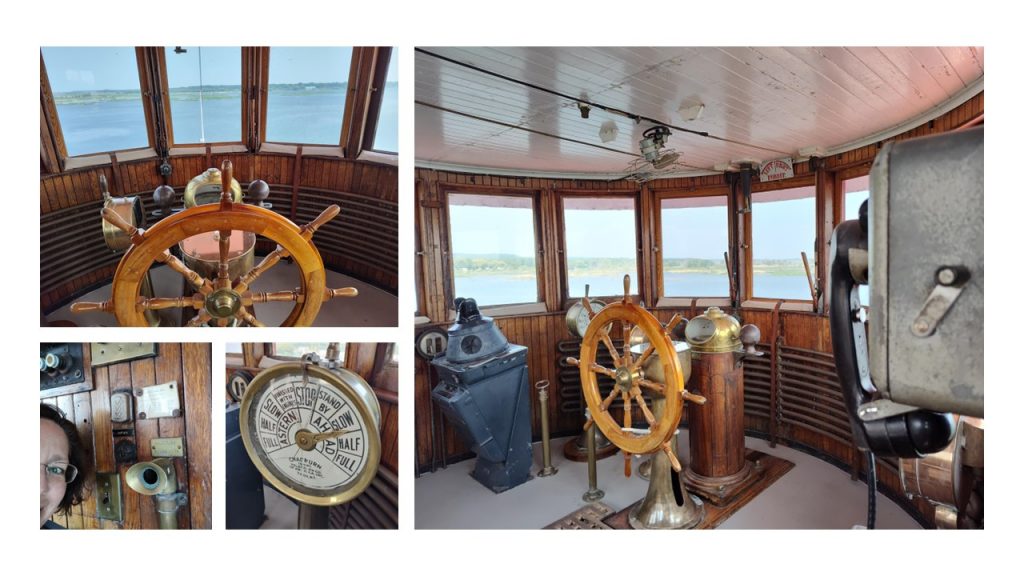
The Train Car Deck
The train car deck could be loaded with 28-32 fully filled freight cars. Now one of these cars is permanently parked on this deck and serves as a museum containing artifacts and a movie. (top left)
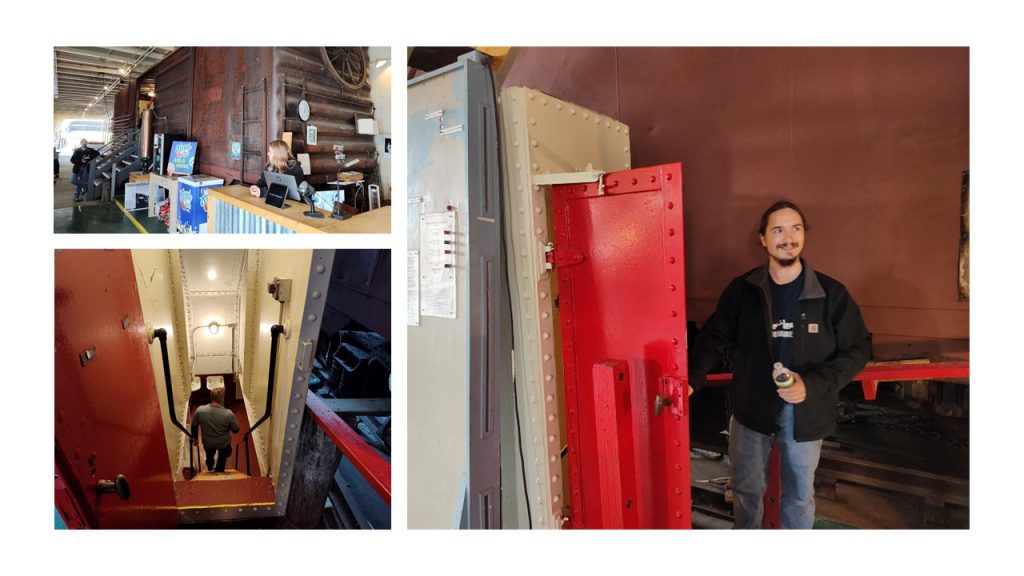
The Flicker
At the bottom of the stairway we entered “The Flicker.” A cherry red, metal table gleamed in the center of the room with berths surrounding the space. A line of sinks stood along the back wall. Our guide stood on the red table, “The rattling train cars (above) would cause the lights to flicker.” He banged his fist on the ceiling and sure enough, the bulbs flashed. “That’s why this room has been named ‘The Flicker.'” He nodded and hopped down off the bench with a youthful bounce.
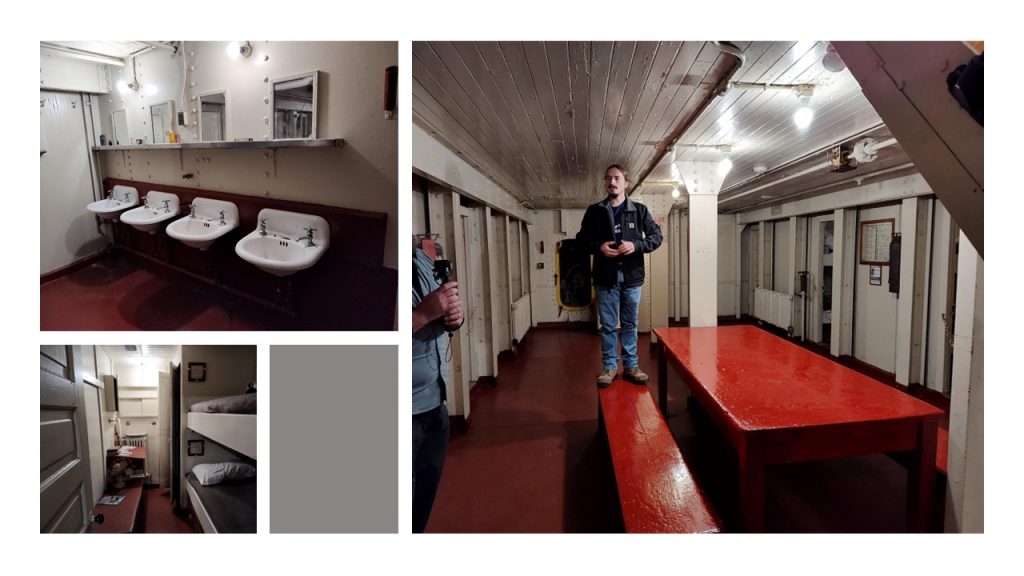
A deck of cards and a can of Pringles were waiting for his return.
The berths on one side housed the car men who had been responsible for loading and unloading freight cars. Along the opposite side of The Flicker were berths for those who worked in the engine room: the boilermen, oilers and wipers. (The engine room door is pictured above to the left of our tour guide.) These hard working men were not allowed to mingle with the passengers.
The Engine
As we descended flights of stairs deeper into the center of the ship, the air flow had ceased. It felt stuffy. The scent of oil hung thickly in the air. I felt claustrophobic. (Left Photo Below)
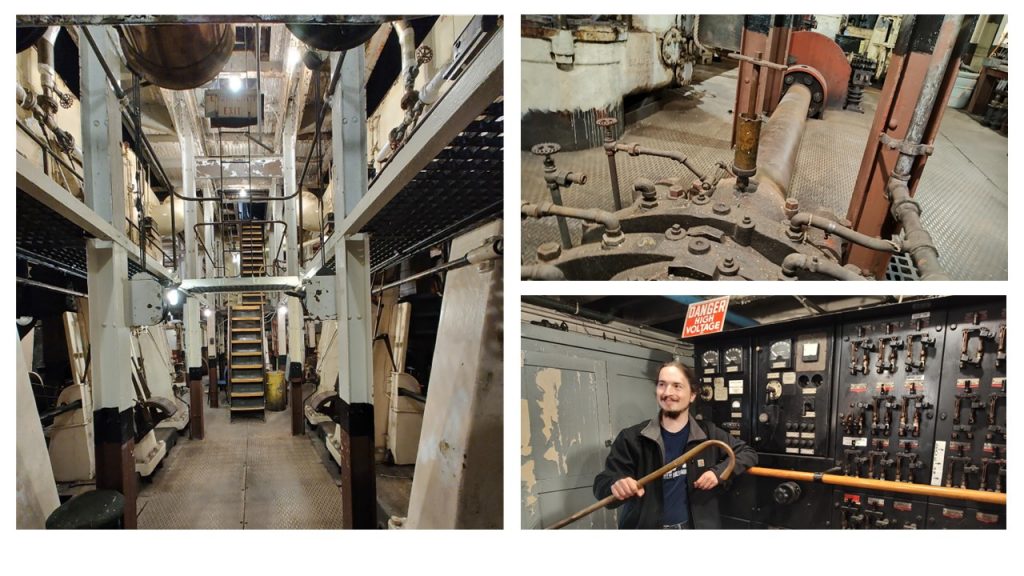
and used to pull a man from the electrical board
if he’d become incapacitated from the 110 volts.
Using four Scotch boilers steam was sent to two triple-expansion reciprocating steam engines. Each engine had ran at the rate of 1350 horsepower. That’s a total of 2700 horsepower. Even with all that power, the heavily loaded vessel had only traveled at 14 mph.
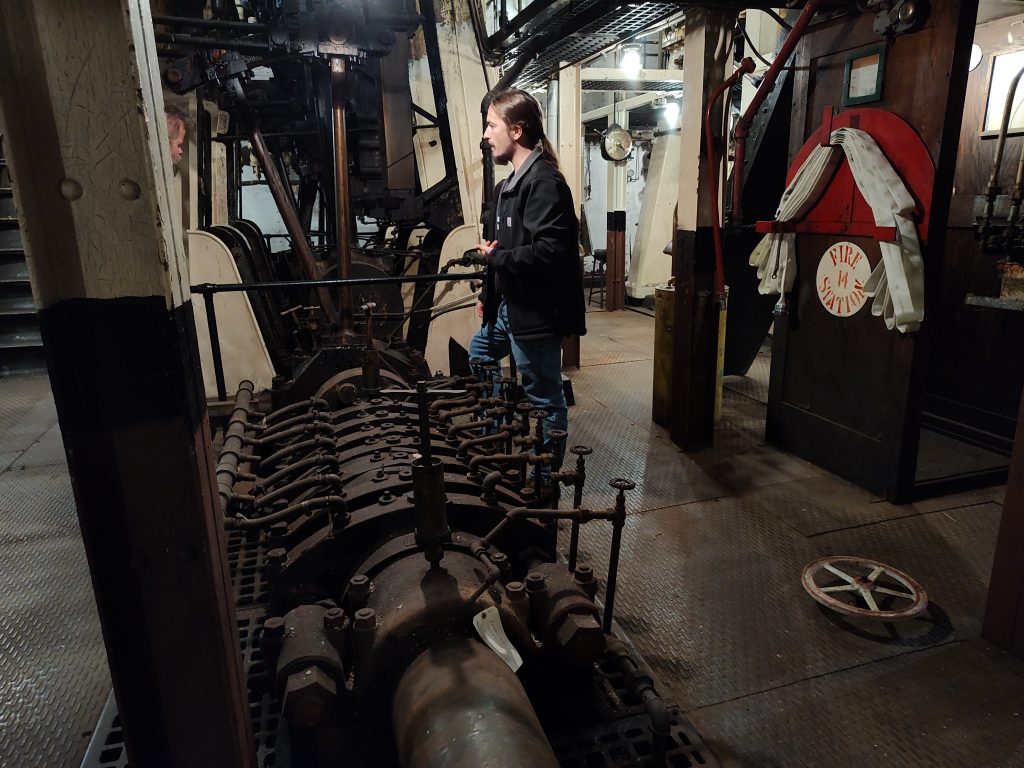
I was struck by the intense work that had taken place here. Keeping the steam engines running smoothly was a challenging task! If the engines were overheating, a small valve could be opened allowing lake water to cool the mechanisms. Honestly, the thought of water being introduced INSIDE the ship made my heart squeeze tightly.
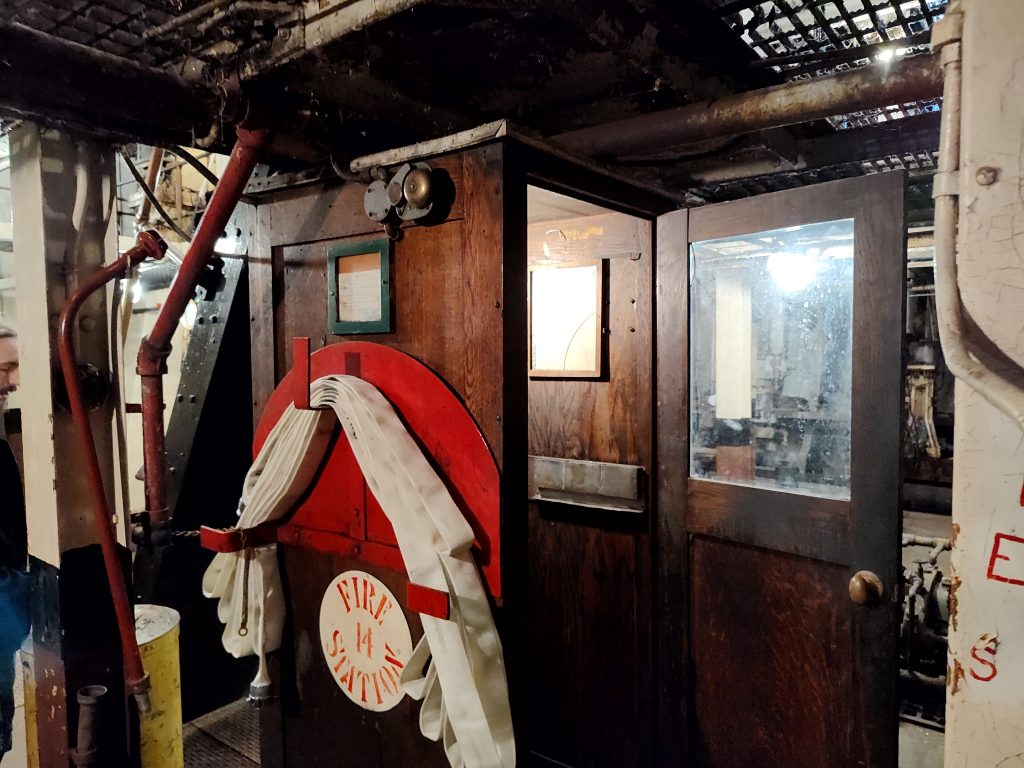
providing a quieter space to confer with the Captain.
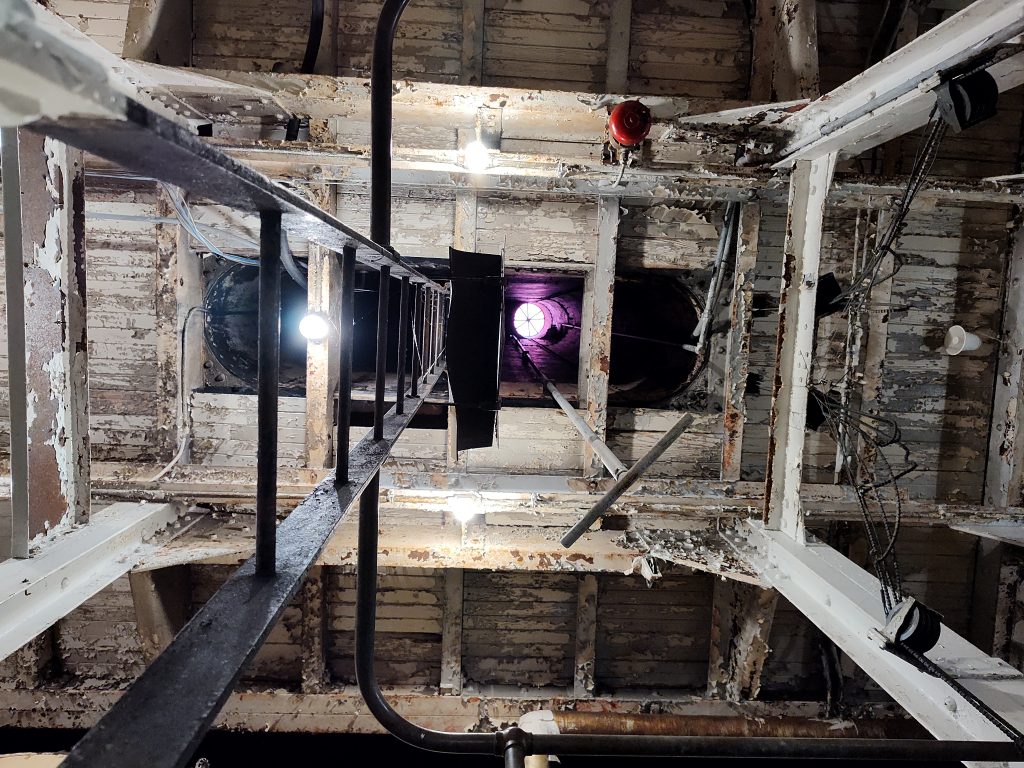
No wonder I’d felt claustrophobic!
Our Overnight Stay
Chuck had booked us ‘the railroad executive’s’ berth. It was larger than most with a seating area and a double bed. “Quaint and cozy” comes to mind as I recall our stay.
Without modern conveniences of heat or air conditioning, the berths have been subject to Mother Nature’s whimsical weather. This particular night in June the temperature dropped to 48 degrees Fahrenheit. I was thankful that I’d brought along my down coat!
Departing The S.S. City of Milwaukee
As well as overnight stays, this ship can be rented for group events: reunions, weddings and parties. During October there are ghost tours which highlight the two deaths aboard this vessel. There are reports of a ‘ghost cat,’ too.
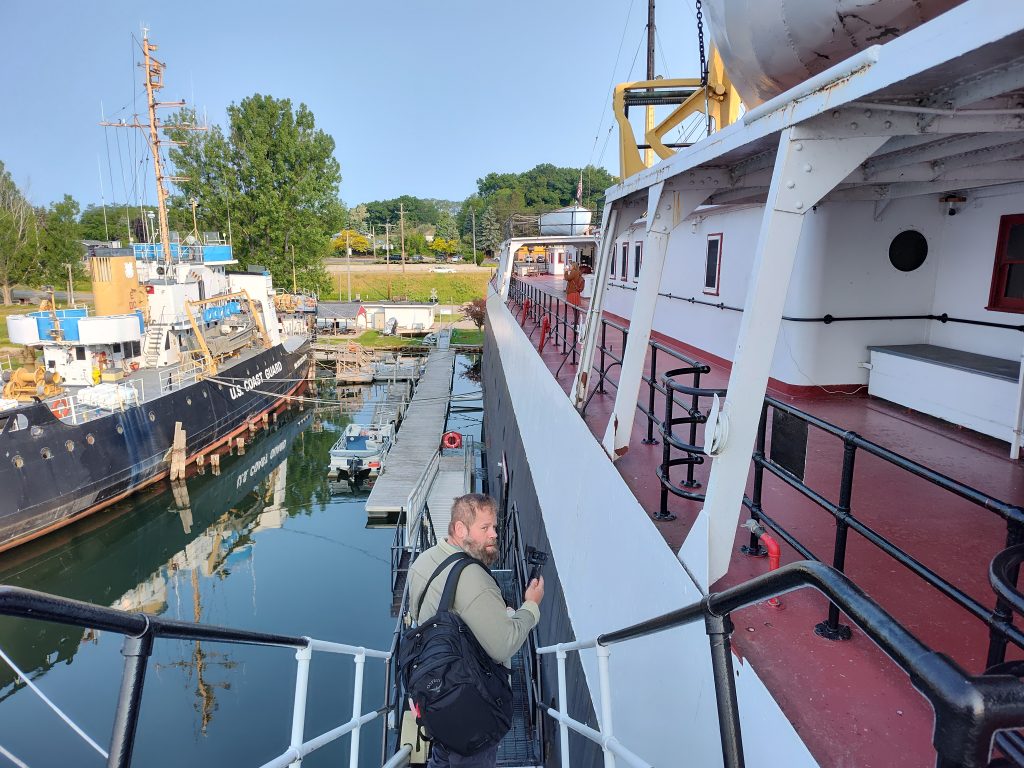
Spending the night aboard the S.S. City of Milwaukee permitted us to tip toe back in time. What a luxury! I highly encourage you to take the opportunity to do the same! Check out our YouTube video of this caper below. Keep being curious!
Related Links:
Check out our YouTube Video of our caper aboard The S.S. City of Milwaukee
Resources:
Contact Information:
Society for the Preservation of the S.S. City of Milwaukee and USCGC Acacia
99 Arthur Street, Manistee, MI, 49660
231-723-3587
SS City of Milwaukee website



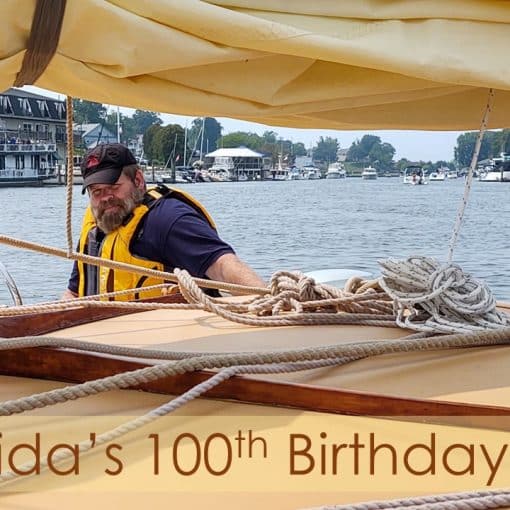

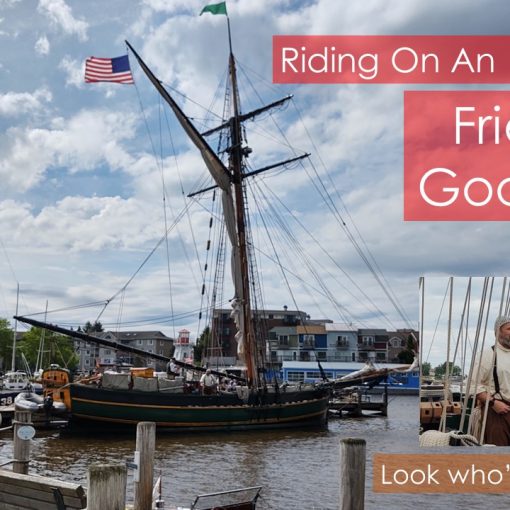
3 thoughts on “A Night Aboard the S.S. City of Milwaukee”
Very cool excursion! Kudos for the excellent writing (and the work of your staff “photographer”).
Jim,
Thank you for your kind words of support!
Love all your adventures !jim